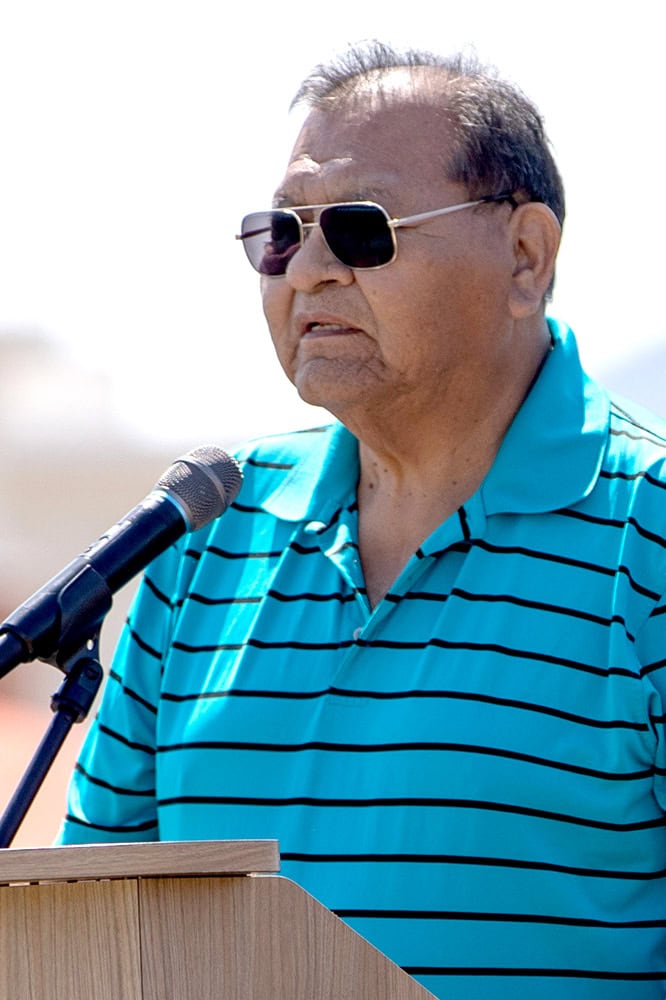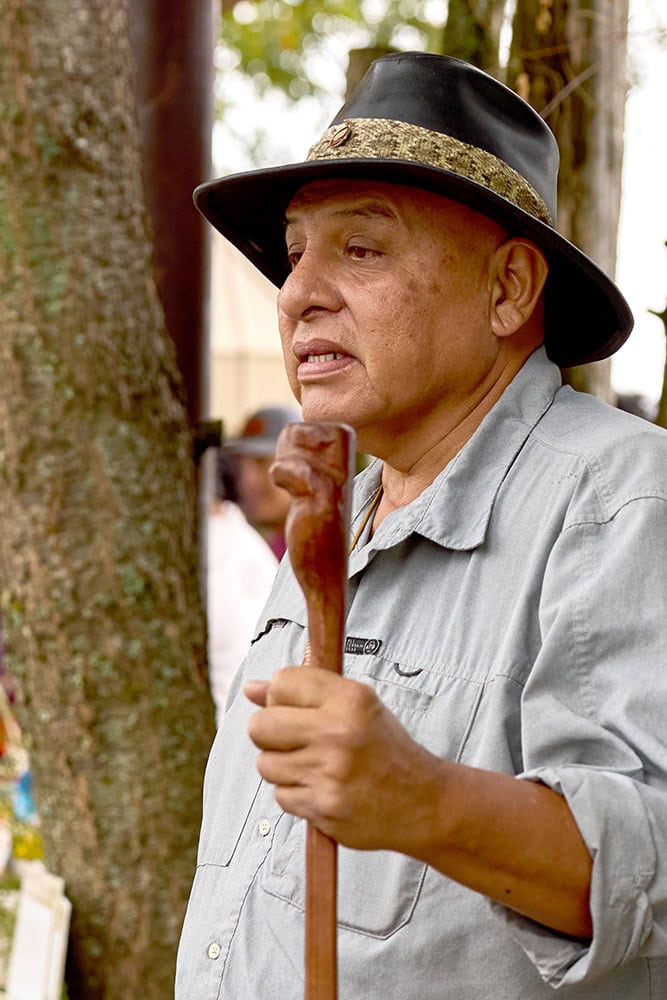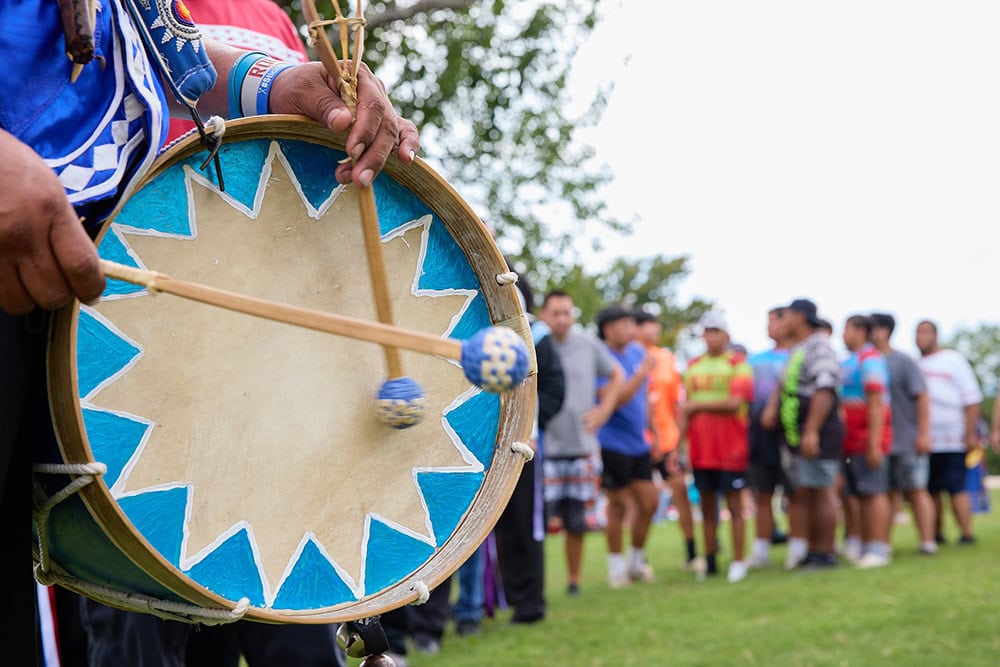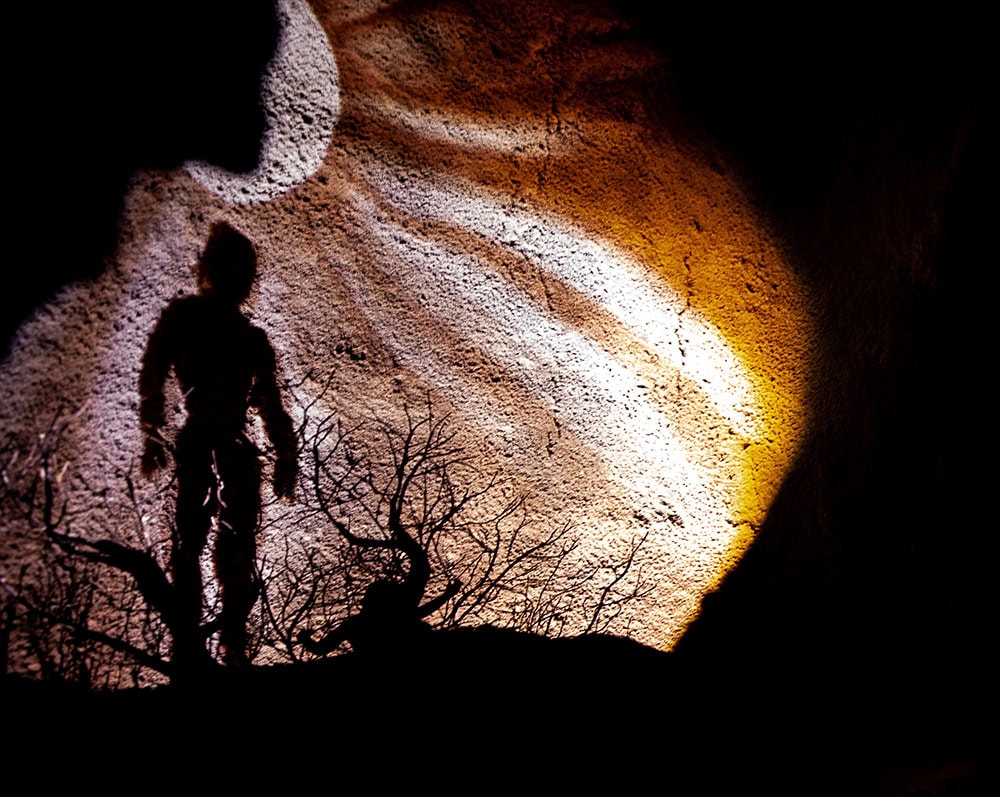

Faith in the Choctaw Nation
Today, many Choctaws embrace Christianity, attending and serving in Christian churches throughout the Choctaw Nation and the world.
Yet, there are still some who still practice a traditional belief system that existed long before Christianity was introduced to their ancestors.
The Biskinik recently had the chance to sit down with Choctaw Nation chaplain and minister Olin Williams and cultural educator Les Williston to learn more. They took us through how Christianity was introduced to Indigenous communities and highlighted traditional beliefs of yesterday and today.
Early Observations of the Sky

People have always looked to the sky with curiosity and wonder. Long ago, early humans didn’t just see stars as lights in the sky, they believed the sun, moon and stars were powerful and sacred.
Researchers have found markings on bones and cave walls that show people were studying the stars as far back as 30,000 years ago.
They watched how the sun, moon and planets moved before civilizations like the Babylonians and Mesopotamians existed.
About 5,000 to 7,000 years ago, people began building temples that lined up with certain stars. For the Choctaw people, the sun was especially important and honored as a powerful spirit.
The Sun and Deities
Olin Williams, employee chaplain for the Choctaw Nation, said a deity is something people admire and worship, something they don’t completely understand but still look up to. Early Choctaws saw the sun as one of those deities, along with the earth and the seasons.
“The sun was something that the Choctaws saw that provided light; it provided necessary things for the plants to grow,” Williams said in his interview.
Early Choctaws didn’t have the scientific knowledge we have today, only what they could observe from nature.
The sun was powerful and respected, as were thunder and other mysterious parts of life, such as childbirth, which was seen as a miracle.

It’s difficult to know exactly what ancient cultures believed. Even within the same tribe, one family’s beliefs could be very different from another’s.
Choctaw Nation cultural educator Les Williston said it made sense for early Choctaws to see the sun as powerful.
“A lot of the traditional Native culture is logical,” he said. The sun makes the grass grow. The animals eat the grass and plants, and people eat the animals. “It’s a circle of life. That’s what it all boils down to. It’s all circles.”
According to Williston, the sun, stars, moon and seasons helped people know when to plant and harvest. Ceremonies and traditions developed around those times, forming calendars, stories and beliefs that were passed down through generations. Many of those original beliefs are still practiced today.
“They used to call us sun worshippers,” said Williston. “When we pray, we turn around and we face the East as the sun’s coming up, as that’s a symbol of the Creator, a piece of God’s eye.”
It’s generally accepted that early Choctaws believed in one single superior being. Because of the differences in family and community beliefs, that being is known by different names to different Choctaw people, like Nanapesa (Spiritual Law-Giver), Nanishtahullo Chito (Something Highly Revered) and Hvshtvhli (probably from hashi-hvt atahli, meaning “the sun’s established order”).
When Williston prays, he often prays to Hvshtvhli.
Williams said that many of the things we understand the why and how of now would be seen as something to deify to early Choctaws.
Something like thunder would have been seen as mysterious. Childbirth was likely another great mystery.
“Childbirth was a miracle to them because they didn’t understand how a human being could pop out of another human being,” said Williams.
Creation Stories

The Nvnih Waiyah Mound or Mother Mound (also known as Nan Awaya or Nanih Waiyah) plays a vital role in the Choctaw origin story. It connects closely to the idea of creation and new life.
Two versions of this creation story were shared in the April 2024 Iti Fabvssa, which can be found at choctawnation.com/news/iti-fabvssa/nvnih-waiya-mother-of-the-choctaw-people/.
The Nvnih Waiya site can be visited only through the permission of the Mississippi Band of Choctaw Indians Tribal Government. To schedule a visit, please contact the MBCI Office of Public Information at 601-663-7532.
One version says that Hvshtvhli, the Creator, gathered clay from the nearby Nvnih Waiyah Creek and used it to form people underground.
An opening from the cave beneath the mound was created, and people came out in groups. Each group traveled in different directions, becoming the Southeastern tribes. The Choctaw people were the last to emerge from the mound and decided to stay at their place of creation.
Another version says four tribes came out of the mound and rested in the sun to dry before moving on. The Muscogee were the first to leave and went east. The Cherokee followed but lost the Muscogee trail and ended up in the north. The Chickasaw came next and settled nearby. The Choctaw were the last to emerge and chose to remain where they were created.
These stories helped early Choctaws understand their place in the world and their connection to other tribes, including the Muscogee, Cherokee, and Chickasaw.
Williston said the resemblance between the Nvnih Waiyah story and childbirth is not a coincidence. The Choctaw people have long honored women as givers of life, the ones who grow families and strengthen the tribe.
“That’s a sacred thing when that woman gives birth,” he said.
Williams said the tribe’s matrilineal society likely developed from its deep respect for women and mothers.
Arrival of Christianity
When Christians began arriving between 1400 and 1500 A.D., they noticed that the Choctaws already had a belief system that honored a mother-and-son connection.
Williams explained that Roman Catholicism was the first form of Christianity introduced to Indigenous people by the Spanish. It brought a new idea of a single deity, one God, that was different from what the Choctaws had known.
According to Williams, Christianity, being a monotheistic religion that focuses on one God, and Catholicism, which honors the relationship between Mary and Jesus, resonated with the Choctaws’ existing beliefs about family and creation.
However, even though the Spanish shared their religion, their main goal was to take land and resources.
This led to distrust, and many Choctaws held on to their traditional beliefs.
Integration of Christianity with Traditional Beliefs
Over time, it became easier for some Choctaws to connect with Christianity. Many already believed in one superior being who watched over the world. They saw the sun as the place where that being looked down on the Earth through a hole in the sky.
Not every Choctaw became a Christian. Williston said many still follow traditional beliefs today.
He explained that fellowship, spending time together in faith and community, has always been part of Choctaw spirituality, whether in church or at traditional dances such as the stomp dance.
According to Williston, there are traditional dance grounds across Oklahoma where people gather to dance, pray and celebrate. Many Indigenous churches support these events and encourage people to continue these practices.
Ceremonies such as the Green Corn Ceremony and the Stomp Dance are still held today, keeping traditional beliefs alive. Williston encourages anyone interested in learning more to talk with elders, visit community centers and, most of all, show respect and openness to learning.
Traditional Choctaw cosmology includes a number of spiritual entities in addition to the Supreme Being.
- One of the benevolent beings is Ohoyo Osh Chishba (Unknown Woman), who some stories say brought corn to the Choctaws.
- Another group of supernatural beings is known by two different names: Bohpulli (Throwers) and Kowi Anuk Asha (Forest Dwellers). These are small human-like creatures who are responsible for teaching medicine to Alekchi (Choctaw doctors), who, in turn, use it to cure Choctaw people from their ailments. However, these same beings are also known for playing mischievous tricks on people.
- Some Choctaw individuals drew upon benevolent supernatural power to serve as Hopaii (prophets) to direct the people. Others used supernatural powers to make rain, often employing a boiled herb, dances and songs.
In traditional Choctaw thought, the beings described above are opposed by a group of sinister spiritual entities.
- Nalusa Chito (big black thing) is roughly equivalent to the devil in Christian thought.
- Oka Nahullo (Something holy in the water), are human-like who live under the water, have light-colored skins, and sometimes capture people.
- Nalusa Falaya (something long and black) resembles a man, but has small eyes and long, pointed ears, and frightens people.
- Hashuk Oka Hoiya (grass water drop) is a glowing orb that travels at night and will lead people away if they follow it.
- Ishkitini are people who use supernatural powers to harm others and are able to take the shape of a horned owl.
Looking Ahead
Next month, we’ll dive deeper into the subject of faith, how Christianity has shaped the tribe and ask who came first, Christianity’s Noah and the Ark or the Choctaw story of Oklatabashih and his large boat?